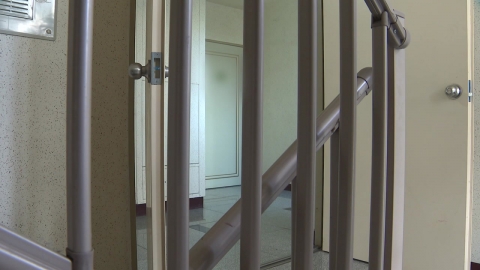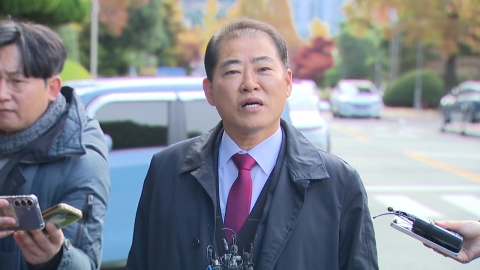■ Starring: Kwon Jae-han, head of the Rural Development Administration
* The text below may differ from the actual broadcast content, so please check the broadcast for more accurate information. Please specify [YTN News PLUS] when quoting.
[Anchor]
These days, rapid climate change is causing confusion throughout society. The same goes for the agricultural sector.
[Anchor]
Today, we will talk about it with Kwon Jae-han, head of the Rural Development Administration. Welcome.
[Recommended]
Hello.
[Anchor]
There will be crops that are most affected by climate change right now, so what are the specific ones, focusing on recent cases?
[Recommended]
Many people were worried about the high price of apples this spring. Apple flowers bloomed early. But as the weather suddenly got cold, I was damaged by the cold weather. It rained frequently that summer, so anthrax came. So, there is a more than 30% decrease in production in 2023 compared to the previous year. In particular, this year, the heat continued until after Chuseok, so there was another great damage to rice extinction.
[Anchor]
It's kimchi-making season right now. So I think the kimchi-making house must have been very worried about the price of cabbage. So I heard that you are pushing ahead with a project in earnest to prevent the summer golden cabbage crisis. What is it about?
[Recommended]
I'm a lot more relaxed now. However, many people were also worried because cabbage prices were high this summer. Usually, the supply of cabbage is weak from August to mid-October. The reason is that cabbages do not grow well in hot weather, so they usually grow in 5,000 hectares of highland areas in Gangwon-do during this hot summer.
Therefore, there is a problem that the supply of cabbage varies depending on the weather conditions, and the price is a little unstable accordingly. So in this vulnerable period, it's important to increase the supply a little more, to take it stably. As a solution, we are applying such technologies to the field to double the storage period of spring cabbage.
If you think about storing vegetables in a refrigerator, it is usually to lower the temperature and extend the storage period, but if we apply MA technology CA technology that can control the breathing of plants, we can double the storage function. Usually, the government stores and takes spring cabbage to supply cabbage, but it can usually go until early August.
However, if you apply such technology to increase storage technology, there are parts that can be applied until the end of September or early October. Second, we are trying to solve the pest problem that farmers who produce high-altitude cabbages are experiencing, increase supply, and consider those problems in a limited area, and demonstrate such technologies that can be grown in summer in paddy areas over 400m above sea level.
[Anchor]
I heard that this year's cabbage and rice are actually bad years.
[Recommended]
In the case of rice, as I said to everyone, there were some damage to rice extinction in the summer. The cultivation area has decreased.Ma was originally 697,000 hectares, which is much lower than last year.Due to the summer heat, the water supply has dropped a lot.
[Anchor]
I'm really worried about climate change. There must be a lot of concerns at the Rural Development Administration, so I heard that it is developing new types that can cope quickly and adapt well to the climate. What's this about?
[Recommended]
It's about us applying new technology to the development of new varieties. Usually, traditional breeders tend to rely on the experience of breeders, for example, the knowledge in their heads, or information written in a notebook. Therefore, depending on the level of experience with breeding, it takes a lot of time to develop varieties or personal know-how itself is an asset, so it is difficult to share knowledge.
So we said that the Rural Development Administration will completely convert the entire process of breed development to digitalization. The technical content is a little complicated. So, rather than explaining the technical content, I would like to tell you our policy direction toward digital breeding.
The first is to increase the use of genetic expertise in the entire process of breed development, and the second is to digitize all information secured in the breeding process and accumulate it on the platform. So, for example, we share all the accumulated information with internal experts, academia, experts, industries, and breeders to raise the level of development and shorten the time when the Korean seed industry develops new varieties.
[Anchor]
It is important to develop varieties in response to climate change, but isn't it also important to predict climate change well?
[Recommended]
That's right. Agriculture is also in the satellite era. We plan to launch agricultural and forestry satellites in the second half of next year by investing 116 billion won jointly by the Rural Development Administration, the Korea Forest Service, and the National Aeronautics Administration. If you launch an agricultural and forestry satellite, it will circle the Earth 14 times a day and take pictures of the Korean Peninsula every three days. Then you can know the total cultivation area, crop status, and final production.
Overall, I think we can secure enough skills on how to respond to disasters such as disasters, droughts, and floods. We are currently operating an additional early warning service for agricultural weather disasters, and we plan to increase it to 110 cities and counties by the end of this year and apply it to all 155 rural areas by next year.
[Anchor]
And what we often hear is smart agricultural technology. What is this specifically?
[Recommended]
I'm sure the viewers know it well.In the case of farming in the past, it can be said that farming was carried out according to the given natural conditions. However, future agriculture is in a situation where farming is based on data by creating optimal growth environmental conditions for crops to grow.
For example, by analyzing the temperature, humidity, CO2 concentration, and nutrient supply operated by facility farms, the optimal growth conditions for a specific crop will be presented. We will increase the number of data collection items to 21 next year and plan to develop and spread a decision-making model for 16 items.
[Anchor]
Climate change is a problem right now, but isn't rural areas suffering from serious problems due to population decline and aging? How do you plan to respond to this?
[Recommended]
That's why I think the shortage of workers is the most serious. I've been to Changnyeong once. When I went to Changnyeong, he was a young garlic farmer of 13,000 pyeong. Before this person mechanized it, the labor cost was about 60 million won a year. However, after changing to mechanization, the labor cost was about 3 million won and the machine rent was 8.9 million won. It cost less than 12 million won. 60 million won and 12 million won. We have significantly reduced the cost.
As such, field farming machines are very important. We have a 99% significant rate of mechanization of rice farming, but in the case of field farming, it is low at 66%. With the goal of completing the development of machinery for the entire process from production to harvesting of eight major field crops by the next 27, we plan to establish a dedicated department related to field agriculture next year and greatly expand manpower and budget.
In this process, if we have superior technology than the Rural Development Administration, we plan to cooperate with them and include them in the consultative body to discuss.
[Anchor]
These days, I heard that agriculture is not just about food security, but is expanding to healing agriculture. What else is healing agriculture?
[Recommended]
Modern people are said to have a lot of stress and lifestyle diseases because of excessive competition and changes in their living conditions. But don't urban residents often feel warm and relaxed when they visit rural areas? When it comes to healing agriculture, people who are physically or mentally uncomfortable use the tangible and intangible assets of agriculture and rural areas to talk about things like healing when they want to recover.
When we looked at the results of research through healing agricultural activities, there were many studies that reduced stress, increased self-esteem, and relieved depression. So, in the future, the Rural Development Administration plans to cooperate with related ministries to expand not only the elderly and the disabled, but also children, adolescents, and urban residents to healing agricultural services that can be used by all citizens.
[Anchor]
If you think of agriculture as an adult job, what do you say that young people are interested in agriculture and want to dedicate themselves to agricultural technology?
[Recommended]
As I've all said, this agricultural sector is an important industrial sector for our young people to challenge. Unlike in the past, agriculture in the future is being carried out by creating the most optimal growth requirements for specific crops through smart agriculture, so I think it is a good field for our young farmers to come and challenge themselves.
[Anchor]
So far, I've talked with Kwon Jae-han, head of the Rural Development Administration. Thank you for talking with me today.
※ 'Your report becomes news'
[Kakao Talk] YTN Search and Add Channel
[Phone] 02-398-8585
[Mail] social@ytn.co.kr
[Copyright holder (c) YTN Unauthorized reproduction, redistribution and use of AI data prohibited]
Nationwide
More- "Even if you combine Jeonju and Jeonju, the benefits remain the same"...Behind-the-scenes persuasion. "In full swing."
- Seoul Transportation Corporation "Quick response to the law struggle..."Maintenance of frequency of operation and dispatch interval"
- Three suffocated to death during vehicle test at Hyundai Motor's Ulsan plant
- Three researchers suffocated to death during Hyundai Motor's Ulsan plant vehicle test.








![[G-Star 2024] 210,000 people visited G-Star, "Successful Finishing"](https://image.ytn.co.kr/general/jpg/2024/1118/202411181130300591_h.jpg)
